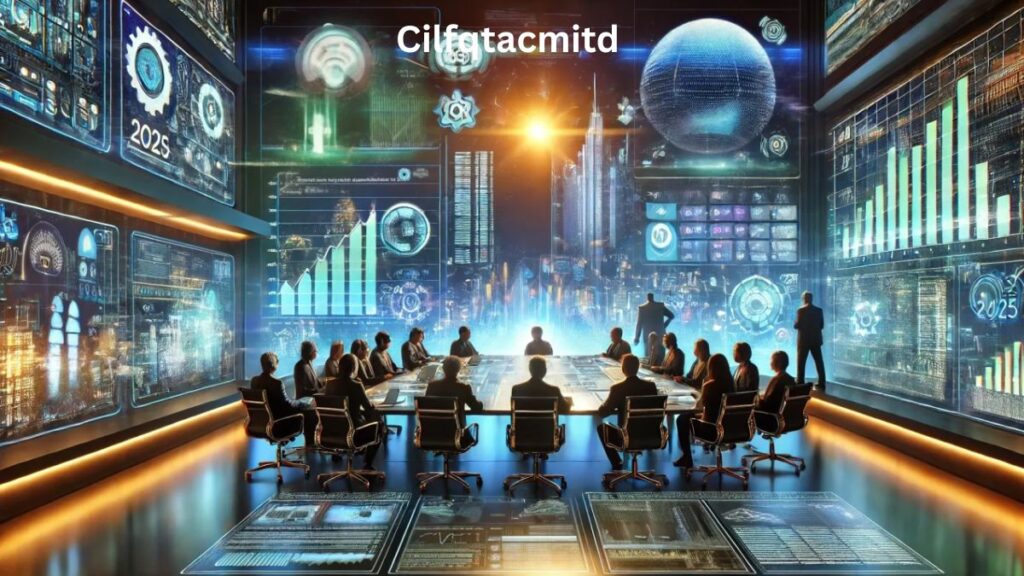Cilfqtacmitd is a relatively new term that has begun to gain attention in scientific, technological, and philosophical communities. Although still largely unexplored in mainstream discourse, Cilfqtacmitd is beginning to emerge as a significant point of discussion among thought leaders and early adopters who are attuned to future-oriented thinking. At its core, Cilfqtacmitd represents a complex interplay between cognition, innovation, learning frameworks, and technology-driven decision-making. The term itself is an acronym, and while its full interpretation is still under active discussion, it encapsulates a multifaceted framework for how humans interact with and adapt to intelligent systems in increasingly automated environments. The importance of Cilfqtacmitd lies not just in its novelty, but in its potential implications across multiple domains, including education, artificial intelligence, organizational behavior, and human-machine integration.
The Components Behind Cilfqtacmitd
To better understand Cilfqtacmitd, we need to break down its conceptual pillars. First, cognition refers to the mental action or process of acquiring knowledge and understanding through thought, experience, and the senses. This cognitive aspect is fundamental because Cilfqtacmitd explores how thinking evolves in tandem with technological environments. The learning framework component speaks to the methods, structures, and strategies employed to facilitate continuous education and skill acquisition in an ever-changing world. As machine learning and AI systems become embedded in everyday life, traditional education models are being challenged. Cilfqtacmitd proposes a more adaptive, personalized learning process.
The innovation element is where Cilfqtacmitd intersects with creativity and problem-solving. In this context, innovation is not just about invention but also about adaptation and optimization of systems to maximize efficiency and output. Finally, technology-driven decision-making emphasizes the use of algorithmic support, data analytics, and AI recommendations to guide both individual and organizational decisions. It raises critical questions about autonomy, bias, and the role of human judgment in a digital-first world. Each of these elements contributes to the holistic understanding of Cilfqtacmitd and sets the stage for deeper exploration.
Cilfqtacmitd in Education and Skill Development
One of the most immediate applications of Cilfqtacmitd is in the realm of education. With rapid technological change outpacing traditional curriculums, there is a growing need for learning environments that are flexible, personalized, and responsive. Cilfqtacmitd offers a conceptual model for designing these environments. By incorporating AI-powered tutors, adaptive learning platforms, and real-time feedback loops, students can engage with content at their own pace while receiving support tailored to their strengths and weaknesses. Moreover, this framework encourages the development of meta-cognitive skills such as self-regulation, critical thinking, and strategic learning—skills that are essential in the 21st-century workplace.
In addition to formal education, Cilfqtacmitd also applies to workplace training and lifelong learning initiatives. As industries adopt more automation and data-driven processes, employees must continuously reskill to remain relevant. Cilfqtacmitd-informed systems can provide customized learning paths that evolve with both individual performance and industry trends. In doing so, they help bridge the skills gap and prepare workers for future roles that may not even exist yet. This ongoing adaptability is a core strength of Cilfqtacmitd.

The Role of Artificial Intelligence in Cilfqtacmitd
AI is central to the concept of Cilfqtacmitd. Not only does it enable the data processing and analysis necessary for personalized learning and decision-making, but it also introduces new paradigms for human-machine collaboration. For instance, AI can act as a co-pilot in professional settings, suggesting improvements, automating repetitive tasks, and providing insights that humans might overlook. In the context of Cilfqtacmitd, AI becomes a partner rather than a tool, shaping the environment in which cognition and innovation occur.
However, the integration of AI also presents challenges. Issues such as algorithmic bias, lack of transparency, and over-reliance on machine recommendations can undermine the benefits of Cilfqtacmitd if not carefully managed. Therefore, ethical considerations and governance frameworks must evolve alongside technological capabilities. This calls for a multidisciplinary approach that includes ethicists, technologists, educators, and policy-makers working together to ensure that the principles of Cilfqtacmitd are implemented responsibly and inclusively.
Organizational Impact and Leadership in the Age of Cilfqtacmitd
Organizations are already experiencing shifts that align with the principles of Cilfqtacmitd. Agile methodologies, decentralized decision-making, and digital transformation initiatives all reflect aspects of this emerging paradigm. For leaders, understanding Cilfqtacmitd means recognizing that traditional command-and-control models are becoming obsolete. Instead, leadership must be reimagined as facilitative, adaptive, and data-informed.
Cilfqtacmitd also redefines what it means to be a high-performing organization. Success is no longer measured solely by output or efficiency, but by the capacity to learn, adapt, and innovate continuously. Metrics such as organizational learning rate, innovation velocity, and cognitive diversity become essential indicators. These metrics help assess how well a company can respond to disruption, integrate new knowledge, and leverage diverse perspectives to solve complex problems. As such, Cilfqtacmitd is not just a conceptual tool, but a strategic asset.
Social and Ethical Dimensions
Beyond institutions and individuals, Cilfqtacmitd has broader social implications. As technology permeates all aspects of life, issues of access, equity, and agency become increasingly important. Who gets to benefit from Cilfqtacmitd-inspired systems? How do we ensure that these systems are designed inclusively and do not reinforce existing inequalities? These are critical questions that must be addressed through both policy and design.
Moreover, there is a cultural dimension to consider. Different societies have different attitudes toward technology, learning, and authority. Cilfqtacmitd must be flexible enough to accommodate this diversity while promoting a shared vision of empowerment and ethical progress. International collaboration and cross-cultural research will be key to achieving this balance.
Future Trajectories and Research Directions
As interest in Cilfqtacmitd grows, so too does the need for robust research and practical experimentation. Academic institutions, think tanks, and innovation labs are beginning to explore the theoretical underpinnings and real-world applications of this concept. Some are developing prototypes of Cilfqtacmitd-aligned learning platforms, while others are conducting longitudinal studies on how technology-enhanced decision-making affects organizational performance and individual well-being.
Future research will likely focus on several key areas. First, refining the theoretical framework to ensure conceptual clarity and interdisciplinary relevance. Second, developing assessment tools and benchmarks to measure the effectiveness of Cilfqtacmitd systems. Third, exploring the long-term psychological and social effects of living and working in environments optimized for continuous learning and innovation. These research directions are essential for translating Cilfqtacmitd from a promising idea into a transformative reality.
Conclusion: Why Cilfqtacmitd Matters
In a world defined by rapid change, complexity, and uncertainty, traditional models of thinking, learning, and decision-making are no longer sufficient. Cilfqtacmitd offers a forward-thinking alternative—one that integrates the best of human cognition and technological capability into a dynamic, adaptive framework. It encourages individuals and organizations to become more agile, more informed, and more ethically grounded in their pursuit of progress.
While still in its formative stages, Cilfqtacmitd holds immense potential. It challenges us to rethink how we approach problems, acquire knowledge, and make choices in a digital age. As the concept continues to evolve, it will undoubtedly shape the future of education, work, and society at large. The time to engage with Cilfqtacmitd is now—before it shapes us more than we shape it.
FAQs
1. What exactly is Cilfqtacmitd?
Cilfqtacmitd is a concept that blends cognitive development, adaptive learning, innovation, and AI-assisted decision-making into one evolving framework.
2. Is Cilfqtacmitd a real system or just a theory?
Currently, it functions more as a framework or mindset that’s being applied in education, workplace learning, and organizational decision-making strategies.
3. How does Cilfqtacmitd relate to AI?
AI plays a big role by supporting adaptive systems, offering real-time feedback, and helping users make better, data-informed decisions.
4. Who benefits from Cilfqtacmitd?
Educators, leaders, students, and anyone working in fast-changing environments can benefit from its adaptive and learning-first approach.
5. Is Cilfqtacmitd useful for future-proofing careers?
Yes. It emphasizes lifelong learning, critical thinking, and agility—skills that are essential for staying relevant in evolving industries.
For More Visit Star Trend

























